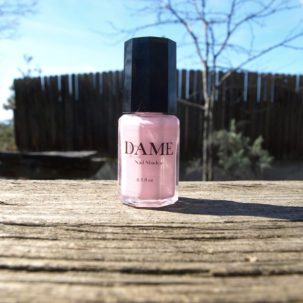There is nothing quite like a fresh manicure, right? Whether your polish of choice is that tried and true favorite, or a brand new color…a manicure can be a fantastic mood booster. If you are like me, doing your own nails is very therapeutic, and I would choose a self-mani over one at the salon (pedicures are a different story…rubbing my own feet is just not the same). Today, I’ll be talking about how to care for your nails and ensure you have the best results for your manicure.
Get Ready!
 First of all, gather all your tools! Keep your arsenal simple or as packed as you want! Some common tools and treatments include:
First of all, gather all your tools! Keep your arsenal simple or as packed as you want! Some common tools and treatments include:
- Non-acetone nail polish remover, cotton balls or cotton pads.
- Bowl to soak nails
- Clippers, nail file, and buffer.
- Cuticle remover, cuticle pusher, and nippers. These are optional, and we will touch on this later on.
- Hand/nail moisturizer and cuticle oil.
- Base coat, polish, and topcoat.
If you want to really set a spa ambiance, light some candles and put on some relaxing music!
Fresh Palette!
Next, remove any existing polish. I highly recommend using a non-acetone remover, especially if you have weak nails that tend to break easily. Acetone nail polish remover gets the job done faster, but is extremely drying and harsh on your nails and surrounding skin. It is perfectly fine for eliminating that pretty, but ridiculously hard to remove glitter and stubborn polish…but keep it to a minimum and definitely moisturize like there is no tomorrow afterwards. From personal experience, I used to use acetone nail polish remover every time, even though my nails have always been weak. Since switching to a non-acetone remover, I have much less breakage and healthier nail beds. So, don’t be impatient like me and use acetone more than necessary. Non-acetone nail polish remover is also drying, so minimize contact with your skin and cuticles.
To Soak, or Not to Soak?
After you remove your polish, you can move on to soaking your nails. Or not. This is a completely optional step. Soaking your nails makes the prep work of filing, buffing, grooming your cuticles easier. It helps prevent hang nails while cleaning up your cuticles. Some people find that filing their nails while they are dry causes more splitting and tearing.
On the flip side, not soaking your nails may result in a longer lasting manicure. When your nails soak, they swell up with water, causing them to take on a different shape than while they are dry. If you don’t let them dry out completely, your polish will dry to that swelled up formation, rather than “fitting” your regular nail curvature.
If you opt to soak your nails, fill a bowl with warm water and soak for 5-10 minutes. If you have any essential oils, such as lavender or argon, a few drops in the water will make your experience a little more spa-like. However, if you choose to forgo the soak, you can use moisturizers and cuticle oil in its place. Just remove any excess oil on the nail bed with a swipe of nail polish remover before painting.
Shape Up.
 Use clippers if you need to shorten your nails quite a bit, and then file- in one direction. I know, I know…It takes more patience. But sawing back and forth on your nails can cause splintering and weaken your nails.
Use clippers if you need to shorten your nails quite a bit, and then file- in one direction. I know, I know…It takes more patience. But sawing back and forth on your nails can cause splintering and weaken your nails.
Which file should you use? There are so many to choose from. Nail files are categorized by grit number. “Grit” is the number of grain particles per square inch. The higher the number, the softer the file. Lower grit files, anything under 180 grit, should ONLY be used on artificial nails. Files with a grit number between 180 and 240 are optimal for shaping the nail. Anything higher than 240 grit is great for buffing and smoothing down any rough edges on the nail tips. Be careful to not buff too much, or else the nail bed will be too smooth for the polish to adhere to.
Disposable files are great- they are cheap and perfect if you are prone to losing them. Glass or crystal files, however, can be sanitized and disinfected. Be careful not to drop them though, they can break easily! As far as metal nail files go, just don’t even go there. They are extremely rough and shred your natural nail. They are commonly found in manicure kits sold in drug stores, but can cause more damage than they are worth.
The Cuticle Issue
Removing cuticles…here we go. The official stance on removing cuticles from the American Academy of Dermatology is no…don’t nip them, don’t even push them back. If your cuticles don’t bother you, by all means, leave them alone. The cuticle, also known as the eponychium, is where the skin meets the nail at the base. It is made of hard non-living tissue that provides protection against infection and damage to the root of the nail bed, from which the nail grows out of. It does not protect the actual nail bed.
But what about cuticle remover? Usually in a gel form, cuticle removers work by softening and eating away at the keratin that makes up the cuticle. Sounds awesome, right? But…
your nail beds are also made up of keratin, so continued use of cuticle remover will weaken your nails over time. I personally have awful cuticles from hell that drive me crazy…but I keep them in check with constant use of cuticle oil. I own more bottles of cuticle oil than anybody should ever have…I keep it in my purse and apply while waiting at the doctor’s office, waiting for food at the restaurant, and while hanging out watching TV at home. I apply a good amount around each of my nails and massage it in really well. When it comes time for a manicure, I only gently push back the cuticle. I do cut my cuticles occasionally, but only where it may be ragged. If you do cut your cuticles, always take extra care to know where the non-living tissue ends and your finger begins.
Moisturize Me!
Okay, just always be moisturizing. Basically never stop. Nothing else in life matters. Joking, obviously.
Everyday tasks are rough on our nails. Washing dishes, using harsh chemicals to clean, using nail polish that isn’t 5-free can result in dry and brittle nails. Moisturizing can really improve the integrity of your nails. Applying a cream or ointment and cuticle oil protects your nails from the elements that cause damage. Nails are jewels, not tools! Avoid using your nails to open packages, and wear gloves when washing dishes and cleaning. Avoid nail polishes containing formaldehyde, and use non-acetone nail polish remover.
Pretty in Polish
 Let your moisturizer soak in for a few minutes, then remove any excess oils with a swipe
Let your moisturizer soak in for a few minutes, then remove any excess oils with a swipe
of polish remover. Then, grab your base coat. A base coat is the foundation of your long lasting manicure…it helps your nail polish stick, and there are a variety of base coats out there to address specific nail concerns. There
are ridge fillers for those who have deeper ridges, moisturizing formulas, and strengtheners for weak nails. Use caution though, many nail strengtheners contain formaldehyde and will only mask the problem, not actually fix it.
Base coats also help prevent staining from polish. Ever removed your polish to find that lovely yellow tint? Especially in the summer, when the heat bakes your polish into your nails. Yuck. Base coats are especially important when using darker colors and neons. While they are on opposite sides of the spectrum, both contain a lot of dyes.
After your base coat, it’s time for that fancy polish you have been prepping for. And it’s Dame Nail Shades, right? When you put that color on, apply in thin coats. Thin coats dry
faster, and more evenly. Nail polish should flex with your nail, and if you use thick coats, it loses its ability to do that. Also, it will chip much more easily than if you use thick coats.
To finish off that beautiful manicure, use a top coat… will prolong the wear of your polish
by sealing it in. Some polishes dry matte, a top coat will make it shiny. Or if you choose, you can make a shiny polish matte, although matte top coats usually don’t offer the same protection. If you have uneven strokes of polish or used glitter, a top coat will help smooth it out. Some top coats offer rapid drying, but these are prone to chipping. Run a coat of top coat along the free edge of your nail to prevent tip wear.
Finally…
More moisture! Then sit back and admire your handy work (I’m sorry…not sorry).
Hopefully these tips help the health of your nails and the longevity of your manicures!
Have a beautiful day!

So cute!!
LikeLike
Thank you! Glad you enjoyed it!
LikeLiked by 1 person
Great!I noticed a typo though on the sentence ” Also, it will chip much more easily than if you use thin coats.”I’m pretty sure it’s supposed to be thick coats.
LikeLike
Thank you! It is supposed to be thick coats. I’ll fix that 🙂
LikeLiked by 1 person